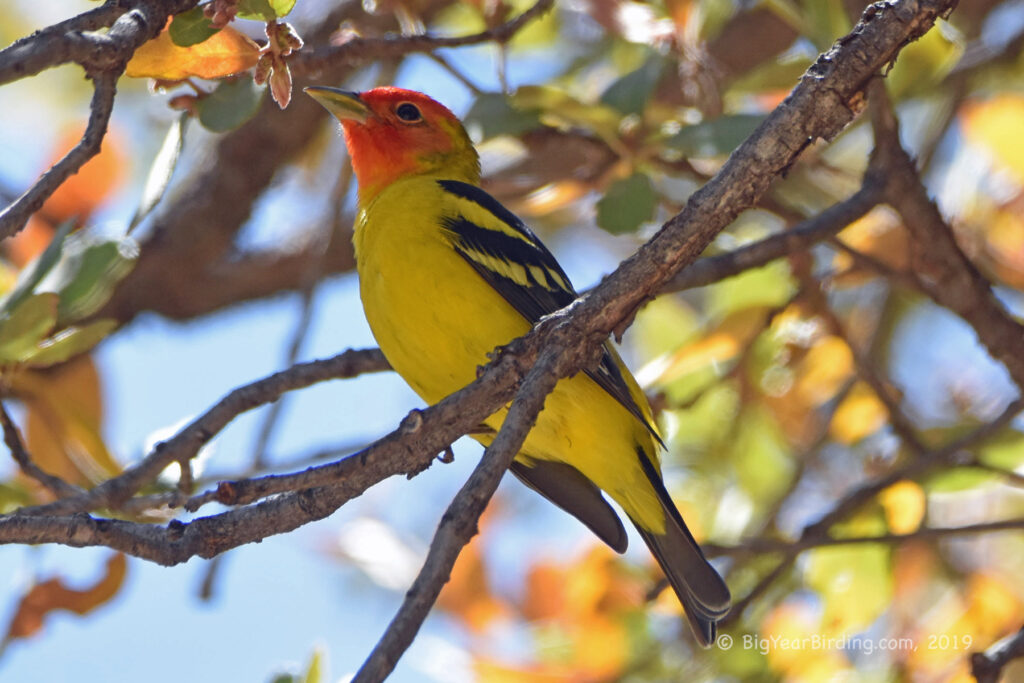The Western Tanager (Piranga ludoviciana) is a medium-sized songbird found in western North America. Adult males have a bright yellow head, a bright red-orange body, and black wings with white wing bars. They have a distinctive thick pointed bill and measure about 7.5 inches in length, with a wingspan of 11.8 inches. They typically weigh between 0.6 and 0.8 ounces, making them one of the larger members of the tanager family.

Female Western Tanagers have a yellow-green head, an olive-yellow body, and two white wing bars on their black wings. Juvenile birds have a similar appearance to females, but with streaking on the head and breast. Western Tanagers are easily recognizable due to their bold coloration and unique bill shape.
The Western Tanager is a migratory bird, spending its breeding season in western North America and its winter season in Mexico and Central America. During the breeding season, they can be found in coniferous and mixed forests, often at higher elevations. During migration, they may be seen in a wider range of habitats, including gardens and parks.
While Western Tanagers are generally considered common and widespread during the breeding season, their populations have shown a decline in some areas due to habitat loss and fragmentation. They are also vulnerable to collisions with buildings and communication towers during migration. Conservation efforts are underway to help protect and restore their breeding and wintering habitats.

The Western Tanager is an important member of the western North American avifauna and a favorite of birdwatchers due to its striking appearance. Its colorful plumage and unique bill make it easy to identify, and its migratory behavior adds to its allure. However, as with many bird species, continued conservation efforts will be necessary to ensure that the Western Tanager remains a common and beloved sight in western North America for generations to come.

